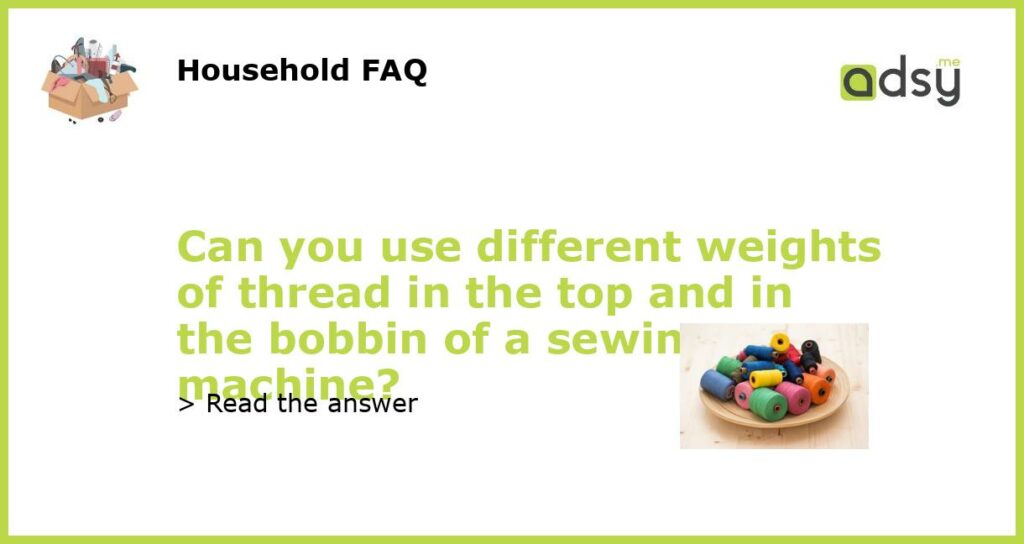Using Different Weights of Thread: Can You Do It?
As any sewing enthusiast knows, the right thread is essential for a successful project. But what happens when you want to use different weights of thread in the top and in the bobbin of your sewing machine? Is it possible, and what do you need to consider? In this article, we’ll explore the ins and outs of using different weights of thread, from choosing the right types of thread to adjusting your sewing machine settings.
Why Use Different Weights of Thread?
Before we get into the specifics of using different weights of thread, let’s take a look at why you might want to do so in the first place. One common reason is for decorative purposes. Using a thicker thread in the top of your machine and a thinner thread in the bobbin can create an interesting contrast on your project. Other times, you may want to use a thicker thread for topstitching or for added durability on certain types of fabrics.
How to Choose the Right Thread
Choosing the right thread for your project is key, and this is especially true when it comes to using different weights of thread. Ideally, you want to choose threads that are designed to work together. For example, if you’re using a thicker thread in the top, you’ll want to pair it with a thinner thread in the bobbin that won’t cause any tension issues. Always check the recommended thread weight for your sewing machine and make sure the threads you’re using fall within that range.
Adjusting Your Sewing Machine Settings
Using different weights of thread can impact the tension on your sewing machine. If the top thread is thicker than the bobbin thread, you may need to adjust the tension to prevent the top thread from pulling the bobbin thread up to the top. This can cause unsightly loops and knots on the back of your project. Experiment with different tension settings until you find the right balance. Additionally, you’ll want to adjust your stitch length and needle size to accommodate the different thread weights.
Using different thread weights can add a unique touch to your sewing projects, but it does require some careful consideration and adjustment. Make sure you’re using threads that are compatible with each other and with your sewing machine, and don’t be afraid to experiment with different settings until you achieve the desired result. With a little practice, you’ll be able to create stunning pieces with a variety of thread weights.






